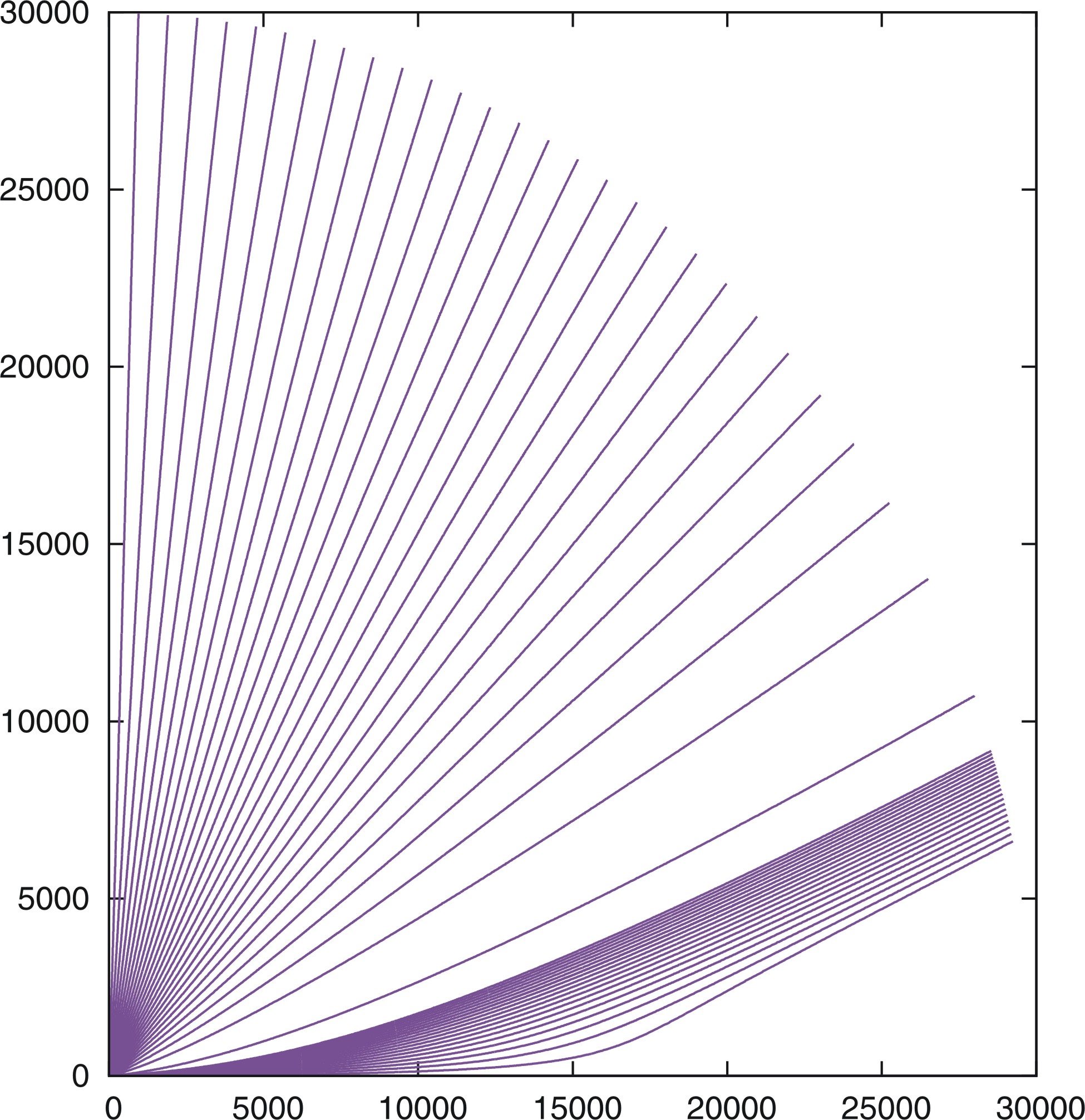
If the hypersonic flow from a source is spherically symmetric, and the magnetic field is "frozen" into the medium in a rotating with the source reference system, then this field in the stationary reference system has a radial and an azimuthal components, and the field lines take the form of a spiral (Parker spirals). At great distances from the source, the azimuthal component becomes predominant, and the radial component can be neglected.
The problem of backward influence of the azimuthal magnetic field on the gasdynamic flow is considered. The solution is sought as a small parameter expansion, where the parameter is inversely proportional to the square of the Alfven Mach number. The solution found shows that the radial velocity of the plasma does not change in the first approximation, whereas a latitudinal velocity appears, and the streamlines begin to deviate from the radial rays toward the axis of rotation. We note that the solution obtained is not suitable at very large distances, where, apparently, it is necessary to use another expansion, taking into account nonlinear effects
hypersonic plasma flow, azimuthal magnetic field

Если гиперзвуковое течение от источника сферически симметрично, а магнитное поле «вморожено» в среду во вращающейся с источником системе отсчета, то тогда это поле в неподвижной системе отсчета имеет радиальную и азимутальную компоненты, а силовые линии имеют форму спирали (спирали Паркера). На больших расстояниях от источника азимутальная компонента становится преобладающей, и радиальной компонентой можно пренебречь.
В работе рассмотрена задача об обратном влиянии азимутального магнитного поля на газодинамическое течение. Решение задачи ищется разложением по малому параметру, который обратно пропорционален квадрату альфвеновского числа Маха. Из найденного решения следует, что радиальная скорость плазмы в первом приближении не меняется, появляется широтная компонента скорости, а линии тока начинают отклоняться от радиальных лучей в сторону оси вращения. Отметим, что полученное решение не пригодно на очень больших расстояниях, где, по-видимому, необходимо использовать другое разложение, учитывающее нелинейные эффекты.
гиперзвуковое течение плазмы, азимутальное магнитное поле.